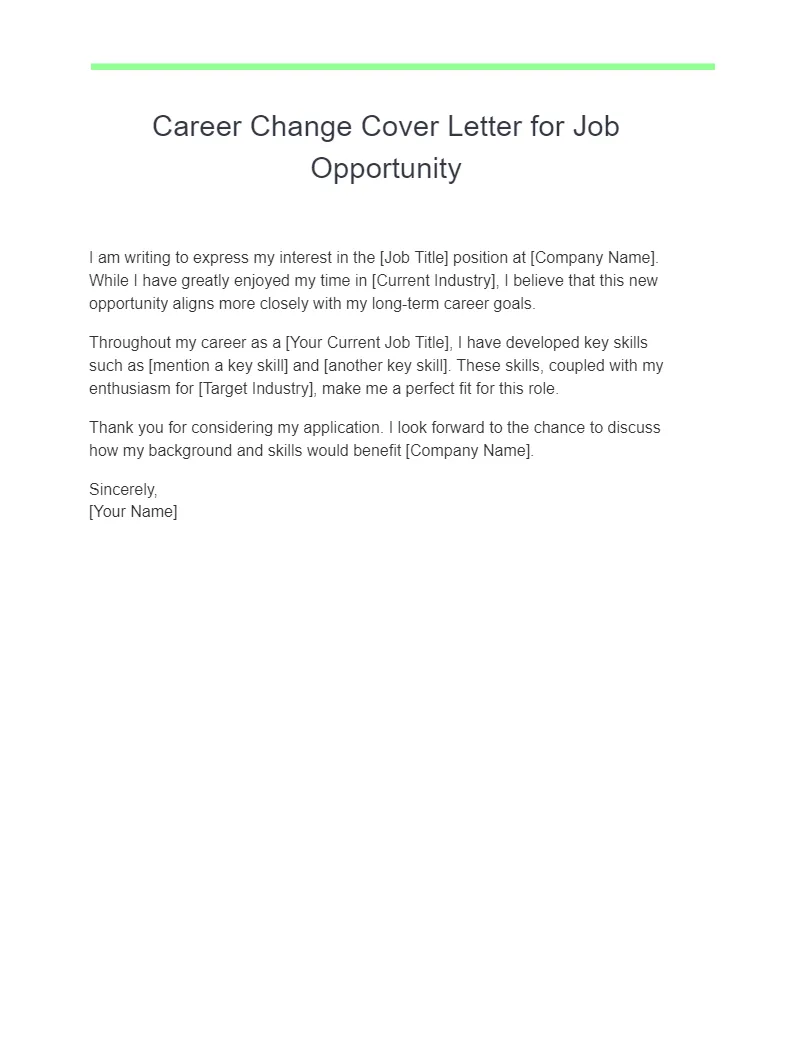Why a Career Change Cover Letter is Crucial
Embarking on a career change can be both exciting and daunting. Your resume provides a snapshot of your past experiences, but a cover letter is your opportunity to tell a compelling story about your transition. It’s where you can explain why you’re making the shift, how your skills align with the new role, and why you’re the ideal candidate. In a competitive job market, a well-crafted cover letter can be the key to unlocking new opportunities. Without one, your application might be overlooked, especially when you’re changing paths. A cover letter isn’t just a formality; it’s a powerful tool that allows you to connect with the hiring manager on a personal level and demonstrate your enthusiasm for the role and the company. It’s your chance to showcase your personality, passion, and the unique value you bring to the table.
Highlighting Transferable Skills
One of the most effective strategies for a successful career change cover letter is to focus on your transferable skills. These are the skills you’ve developed in previous roles that are applicable to your desired new career. This is where you bridge the gap between your past experience and your future aspirations. For example, if you’re moving from marketing to project management, highlight skills like communication, organization, problem-solving, and leadership. These skills are universally valued across industries. When you identify these core skills, be sure to offer supporting examples, where possible. This will help you stand out from the other applicants, and will highlight how you are a good fit for the role that you are applying for.
Identifying Your Core Competencies
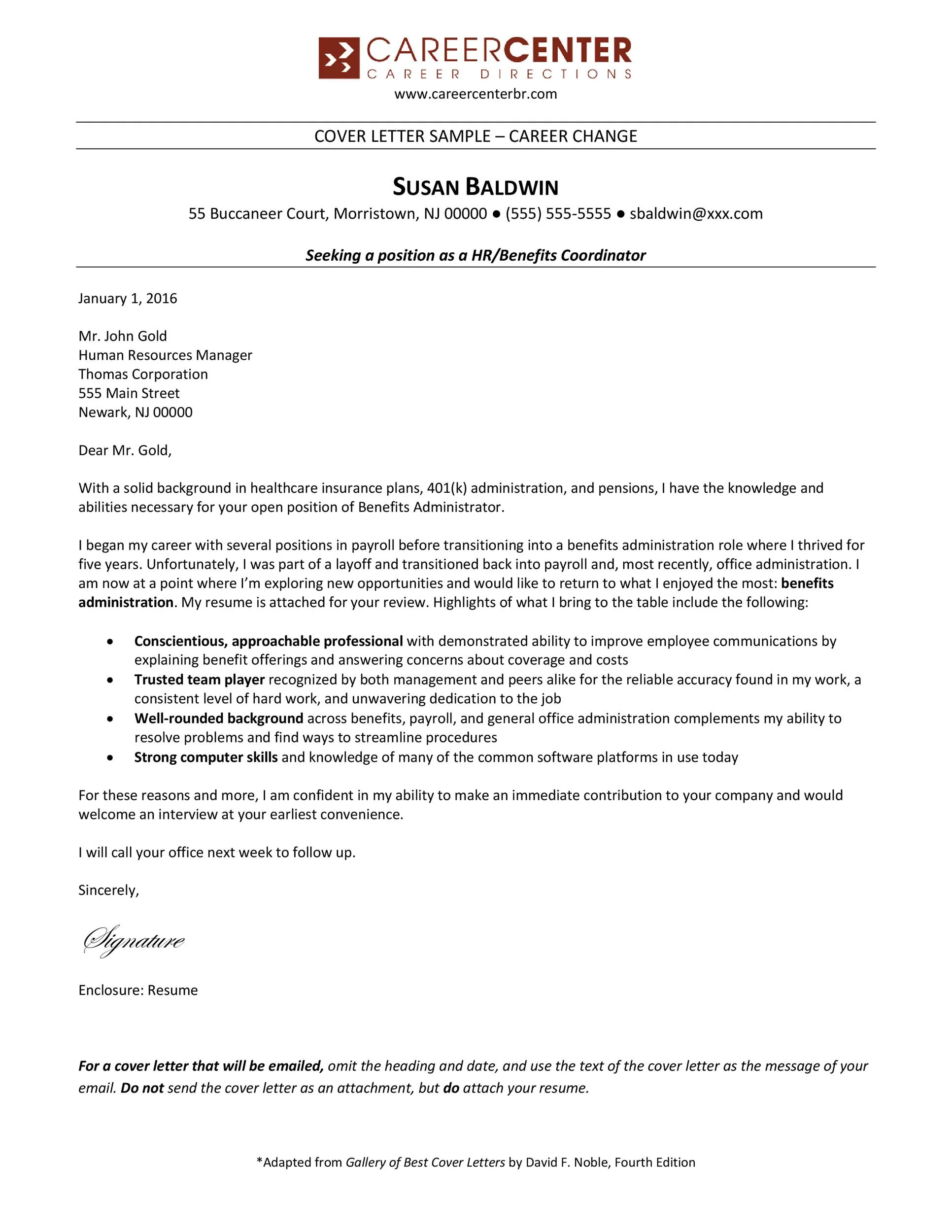
Beyond transferable skills, identifying your core competencies is essential. Core competencies are the unique skills and abilities that make you stand out. Consider what you are exceptionally good at. This could be anything from strategic thinking and data analysis to customer service and technical proficiency. In your cover letter, you should provide specific examples of how you have used these core competencies in past roles to achieve results. This helps the hiring manager understand not just what you can do but how you do it effectively. It demonstrates your understanding of the role’s requirements and your ability to contribute meaningfully to the team.
Showcasing Achievements Not Just Responsibilities
When writing your cover letter, don’t simply list your job responsibilities. Instead, focus on your achievements. Achievements demonstrate your impact and value. Instead of saying, “Managed social media accounts,” say, “Increased social media engagement by 30% within six months by implementing a new content strategy.” The latter showcases a clear result and demonstrates your ability to drive positive outcomes. Use action verbs and provide quantifiable results whenever possible. This approach helps the hiring manager quickly understand what you’ve accomplished and the value you bring to the table. Focus on metrics, results, and successes that are relevant to the new role and company.
Quantifying Your Accomplishments
Quantifying your accomplishments is key to making your cover letter stand out. Numbers and data provide concrete evidence of your abilities and impact. For instance, instead of stating, “Improved customer satisfaction,” write, “Increased customer satisfaction scores by 15% through the implementation of a new customer service training program.” Use percentages, dollar amounts, or any other relevant metrics to illustrate your successes. This makes your achievements more tangible and allows the hiring manager to quickly assess your value. When possible, tie your achievements to the company’s goals and objectives to demonstrate that you can contribute to their success. Be as specific and clear as possible, as this will give you the most positive impact.
Addressing the Career Change Directly
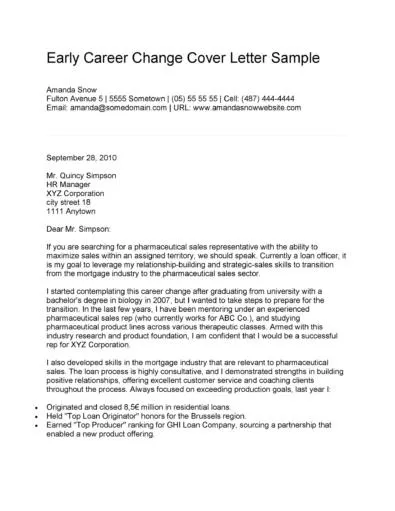
Don’t shy away from addressing your career change head-on. Be transparent about your reasons for switching paths, and use your cover letter to proactively address any concerns the hiring manager might have. This shows confidence and initiative. The best way to address your career change is to provide a clear and concise explanation of why you’re transitioning. Be honest about your motivations, but frame them in a positive light. Focus on what you’re moving towards rather than what you’re leaving behind. This could be a desire for new challenges, a passion for the industry, or the opportunity to utilize specific skills.
Explaining the Reason for the Shift
When explaining the reason for your career change, focus on your goals and aspirations. Briefly mention what motivated you to seek a new path, such as a desire for greater work-life balance, more creative opportunities, or a stronger sense of purpose. Clearly articulate how the new role aligns with your long-term career objectives. Avoid negative language or any criticism of your previous roles or employers. Instead, highlight your excitement for the future and the opportunities the new role presents. This positive and proactive approach will make you a more appealing candidate.
Demonstrating Genuine Interest in the New Field
Showcase your genuine interest in the new field or role. This is a critical element of a successful career change cover letter. You can do this by demonstrating that you’ve researched the industry, the company, and the specific role. Mention specific aspects of the job that excite you. You can also talk about the values of the company or its recent achievements. This shows that you’ve done your homework and are genuinely invested in the opportunity. This is a great way to showcase the candidate that you are. Highlight any relevant coursework, certifications, or volunteer experiences related to the new field. This demonstrates a proactive approach to learning and skill development.
Tailoring the Letter to Each Job
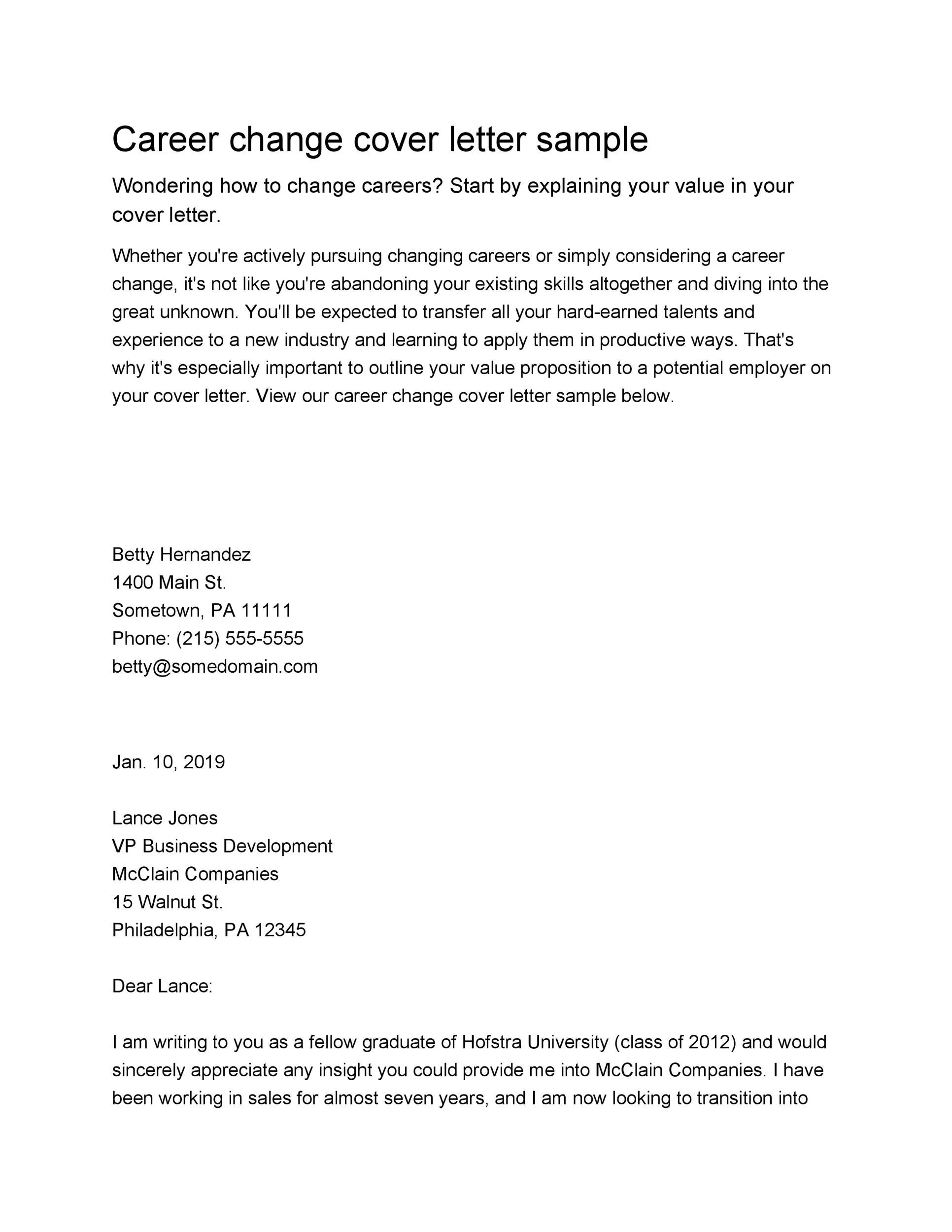
A generic cover letter rarely makes a strong impression. Tailor each cover letter to the specific job you are applying for, and avoid sending the same version of your cover letter to different companies. This shows you are serious about each opportunity. This level of personalization shows the hiring manager that you’ve taken the time to understand the role and the company. You should review the job description carefully and identify the key skills and qualifications they are seeking. Then, adjust your cover letter to highlight how your experience aligns with those requirements. Make sure that you show how your skills match with what is asked for the role.
Researching the Company and Role
Before you start writing, thoroughly research the company and the specific role. Visit the company’s website, read news articles, and check out their social media presence. Understand their mission, values, and recent achievements. This knowledge will enable you to customize your cover letter and show that you understand their business. In your cover letter, mention specific projects, initiatives, or values that resonate with you. This shows that you’ve invested time and effort into understanding their organization and demonstrates your genuine interest. Also, research the role itself. Understand the responsibilities, the skills required, and the team you would be working with.
Using Keywords from the Job Description
Pay close attention to the keywords used in the job description. These keywords often reflect the skills, qualifications, and experience the employer is seeking. Incorporate these keywords naturally into your cover letter. This will help your application pass through Applicant Tracking Systems (ATS) and catch the hiring manager’s eye. While it’s important to use relevant keywords, avoid keyword stuffing, which can make your letter sound unnatural and forced. Instead, weave the keywords into your narrative seamlessly. Focus on demonstrating how your skills align with the job requirements. You can also use synonyms and related terms to show your breadth of knowledge.
Formatting and Tone for Maximum Impact
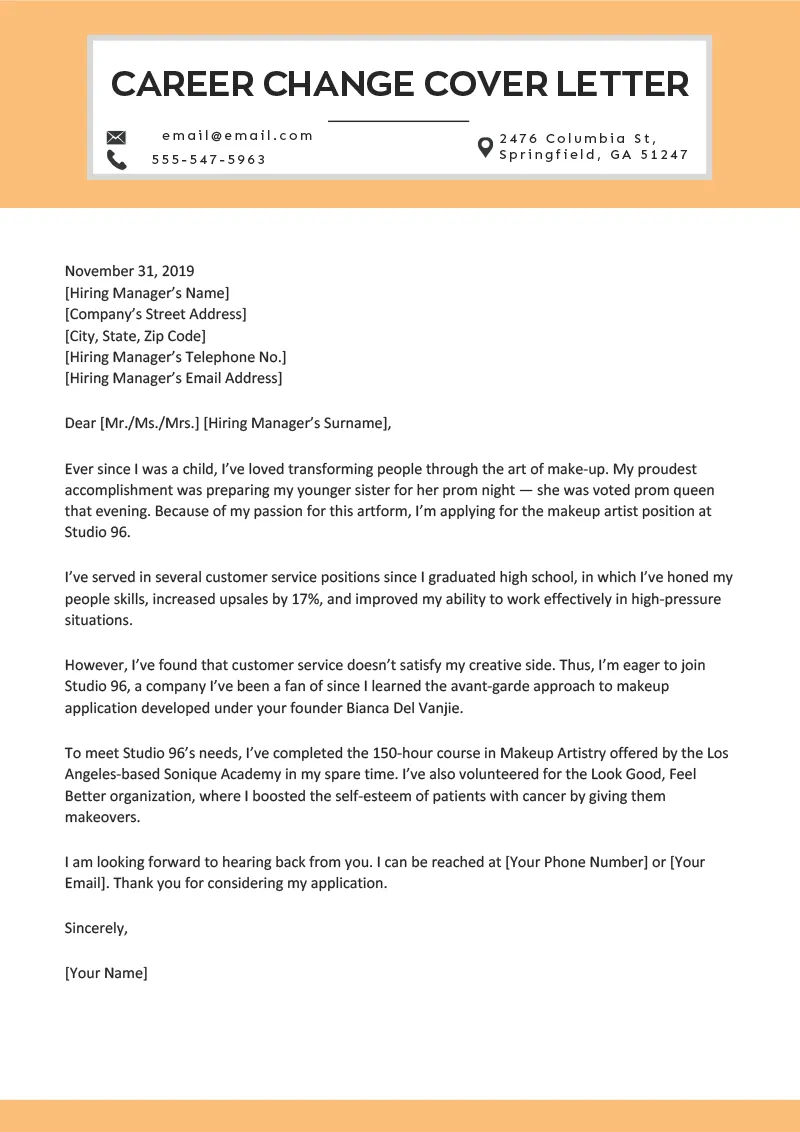
The format and tone of your cover letter significantly impact its effectiveness. A well-formatted and professionally written cover letter conveys professionalism and attention to detail. Formatting and tone work hand in hand, to increase your chances of success. Ensure your cover letter is easy to read, visually appealing, and reflects your personality and the values of the company. Ensure you follow the correct structure of your cover letter. Using this method, your cover letter will give you the best chance of being successful.
Professional Formatting Tips
Use a professional font like Arial, Calibri, or Times New Roman in a readable size. Use clear and concise language throughout your cover letter. Avoid using overly complex sentences or jargon. Keep your paragraphs short and to the point. Use bullet points to highlight key skills and achievements. This makes your cover letter easier to scan and digest. Make sure the margins are consistent. The goal is to make your cover letter visually appealing and easy to read. A clean and professional layout shows that you value quality and attention to detail. Proofread your letter carefully, before sending it in.
Maintaining a Positive and Enthusiastic Tone
Your tone should always be positive and enthusiastic. Your cover letter should be filled with excitement for the new role. Show your interest in the company. Avoid negative language or complaints. Instead, focus on the positive aspects of the opportunity and your transferable skills. When discussing your career change, frame it as a move toward something rather than away from something. Demonstrate your enthusiasm for the future and your willingness to learn and grow. Maintain a professional tone throughout your cover letter. This shows that you are serious about the opportunity. Highlight your strengths, skills, and potential contributions to the company.
Proofreading and Editing for Perfection
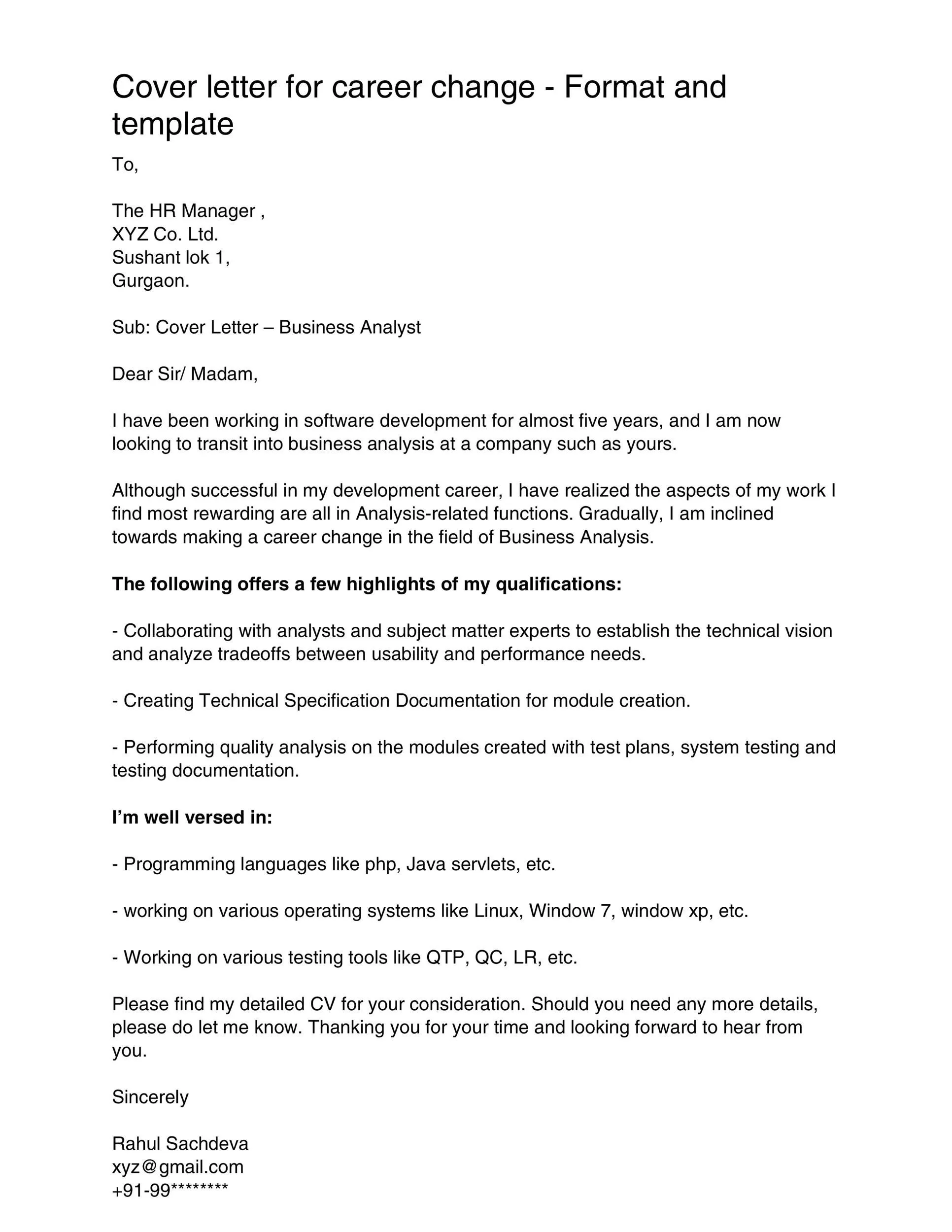
Proofreading is a critical step in the cover letter writing process. A single typo or grammatical error can undermine your credibility. Always proofread your cover letter carefully for any errors. Check for spelling, grammar, punctuation, and sentence structure. Use a grammar checker, but don’t rely on it completely. Have a friend or family member review your cover letter. A fresh pair of eyes can often catch errors you may have missed. Reviewing your cover letter helps ensure your application stands out for the right reasons and significantly increases your chances of success.
